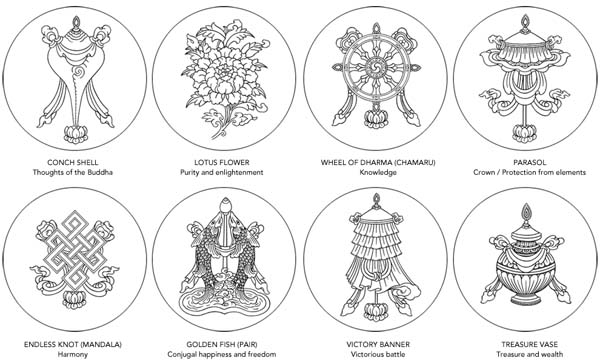Dalai Lama and Tibetan Buddhism
Imagine if you became the leader of a nation when just 15 years old? That’s what happened to Lhamo Thondup, better known now as the Dalai Lama and spiritual head of Tibetan Buddhism. In 1950 he became the political leader of Tibet (now controlled by China) and a guiding light for the world promoting peace, compassion, and tolerance; as the spiritual leader of millions of people. His Holiness Dalai Lama is the 14th High lama of the “Yellow Hat” or Gelug form of Buddhism.
|
Name: |
His Holiness Dalai Lama |
|
Birth, Age, Death: |
July 6, 1935, 77 years old in 2012 |
|
Nationality: |
Tibetan |
|
Method/Religion started: |
Continues linage of Tibetan Buddhism |
|
Holy book/teachings: |
Gives public lectures and initiations. |
|
Followers: |
10-20 Million |
|
Lifestyle requirements: |
Virtuous simple life, avoid killing any being |
|
Form of practice: |
Mostly the study of Buddhism and meditation. Gives initiation (normally Kalachakra) and requires life-long practice for the serious seeker, including at least one long meditation retreat. |
|
Wiki (encyclopedia) link: |
http://en.wikipedia.org/wiki/Dalai_Lama |
- Take into account that great love and great achievements involve great risk
- When you lose, don’t lose the lesson
- Follow the three R’s: (Respect for self, Respect for others and Responsibility for all your actions)
- Remember that not getting what you want is sometimes a wonderful stroke of luck.
- Learn the rules so you know how to break them properly.
- Don’t let a little dispute injure a great relationship.
- When you realize you’ve made a mistake, take immediate steps to correct it.
- Spend some time alone every day (try to meditate).
- Open your arms to change, but don’t let go of your values.
- Remember that silence is sometimes the best answer.
- Live a good, honorable life. Then when you get older and think back, you’ll be able to enjoy it a second time.
- A loving atmosphere in your home is the foundation for your life.
- In disagreements with loved ones, deal only with the current situation. Don’t bring up the past.
- Share your knowledge. It is a way to achieve immortality.
- Be gentle with the earth.
- Once a year, go some-place you’ve never been before.
- Remember that the best relationship is one in which your love for each other exceeds your need for each other.
- Judge your success by what you had to give up in order to get it.
- If you want others to be happy, practice compassion.
- If you want to be happy, practice compassion.
Tibetan Buddhism
Tibetan Buddhism recognizes :-
- the teacher or ” Lama” (see Dalia Lama above)
- preoccupation with the relationship between life and death
- important role of rituals and initiations
- rich visual symbolism
- elements of earlier Tibetan faiths
- mantras and meditation practice
The practice features numerous rituals, and spiritual practices such as the use of mantras and yogic techniques.
Enlightened beings are important – Buddha’s and bodhisattva’s gods and spirits taken from earlier Tibetan religions continue to be taken seriously. Bodhisattva’s are shown as both compassionate godlike figures and vengeful deities.
Visual aids and symbols as shown above to help in understanding are very common and the practice very is strong in both monastic communities and among lay people with the monks crucial to providing ritual services to lay people.
People outside of temples have more of an emphasis on outwardly religious activities rather than the inner spiritual life: there is much ritual practice at temples, pilgrimage is popular; often including many prostrations, and prayers are repeated many fold with the use of prayer aids. There are many festivals with funerals as very important ceremonies.


